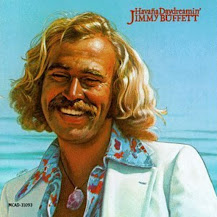“There’s a nice little girl,” I told myself out loud in the car, “for a guy that’s interested in a nice little girl.” Nobody said anything. “But I’m not,” I said.
* * * * *
“She’s a nice girl. Not my type.”
“You don’t like them nice?” He had another cigarette going. The smoke was being fanned away from his face by his hand.
“I like smooth, shiny girls, hard boiled and loaded with sin.”
“They take you to the cleaners,” he said indifferently.
“Sure. Where else have I ever been?”
- Raymond Chandler, Farewell, My Lovely
The above nearly sums up one half of the secondary conflict for detective Phillip Marlowe in Raymond Chandler’s 1942 classic, Farewell, My Lovely. For all his protestations about what he does and doesn’t want in a woman, he is clearly as equally drawn to “nice girl” Anne Riordan as he is to “smooth, shiny” and “loaded with sin” Helen Grayle.
And the novel derives as much of its power from the tension this Devil’s Triangle generates as it does from the primary, more action-oriented conflict. Chandler, a writer of considerable skill, fed the tension expertly, and Marlowe gets jerked back and forth for pages at a time as a result.
Many crime fiction aficionados consider Farewell, My Lovely Chandler’s best work. Personally I can’t pick a clear favorite from among his novels (although I certainly have a least favorite: the slight and underwhelming Playback, written toward the end of Chandler’s life). But I do think Farewell, My Lovely is damned good.
And one of my reasons for this opinion is the character of Anne Riordan. In many ways she is the opposite of the classic hard boiled femme fatale: accomplished in her own right: an investigative reporter following the moral example of an incorruptible cop father. Anne Riordan proves a match for Marlowe in so many ways, and is both a delight to encounter, and impossible for the reader to ignore.
So imagine my delight when I heard that the latest Marlowe novel commissioned by the Chandler estate would feature a returned Anne Riordan, this time running her own detective agency, and set to both compete with and cooperate with Marlowe once again.
I am, of course, talking about Scottish author Denise Mina’s new novel, The Second Murderer: the first Marlowe novel commissioned by the Chandler estate to be written by a woman. This book comes in the footsteps of such previous post-Chandler novels as Robert B. Parker’s execrable Perchance to Dream, Benjamin Black’s solid if unspectacular The Black-Eyed Blonde, Lawrence Osborne’s interesting-yet-ponderous Only to Sleep (an over-the-hill Marlowe limping around 1980s Mexico), and most recently Joe Ide’s The Goodbye Coast, an attempt at a “modern update” of Marlowe, which Washington Post literary critic Maureen Corrigan neatly summed up thusly:
“Unfortunately, apart from its moody, Chandler-esque title and a main character called Philip Marlowe, ‘The Goodbye Coast’ has as much connection to Chandler’s novels as Rome, N.Y., has to Rome.”
Each of these efforts, as noted above, was commissioned by the Chandler estate, and each was written by a man, with uneven results. So, of course it’s high time the estate sought out the talents of a woman to take on this task.
And for my money, Mina’s novel is far and away the best of the lot. And it’s not at all close.
Which is saying something, because Mina’s Marlowe, although hardly a carbon copy of the original, really does a fine job of taking up the same spiritual space as Chandler’s iconic character. No mean feat.
Lots more to say on this topic, will have to pick it back up next time.
See you in two weeks!

















.jpg)






